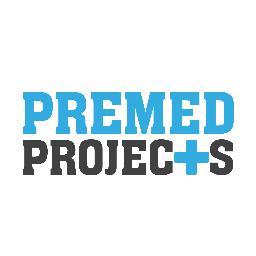Published on May 19, 2024
Reading Time: 8 min
Nonmaleficence in Healthcare: Meaning & Applications
Non-maleficence (or nonmaleficence) is one of the 4 key principles in medical ethics and can be traced back to the time of Hippocrates. It states that doctors must avoid causing harm to patients, and while it is often summarised as simply ‘do no harm’ it is a bit more complex than that in practice.
Here we will explore what Non-maleficence means, both in theory and in practice, beyond the surface level, and how this is applied and tested in interview scenarios and healthcare.
What is Nonmaleficence?
So what is Non-maleficence really? It is the duty of a healthcare professional to prevent harm coming to their patients through themselves, where this harm is disproportionate to the benefit obtained from it. For this to make sense, it is essential to understand that everything in medicine carries risk at some level. A simple blood draw can carry a risk of infection and that would undoubtedly be harmful to your patient. Now why do we still do it? Because the risk of harm is very small and the benefit gained from the information the blood test can provide is significant. Therefore, this would constitute one of those situations where the risk is justified against the benefit.
Non-maleficence also means that unnecessary harm needs to be avoided which applies in many situations but a good example of this is doing interventions or tests on a healthy person, with no symptoms of a disease. To apply this to clinical situations, it is important to be aware that harm can be psychological, emotional or social, as well as physical. So, just because there is no physical harm done to your patient does not necessarily mean that what you are doing could not be causing harm in another way. An example is causing anxiety or stress.
Why is Nonmaleficence Important?
Part of this is perfectly obvious – no one should be harming others on purpose and we should always balance benefit and risk. However, in medicine, this is particularly important for a few reasons.
- The risks are much higher: Medications, surgeries and treatments all have side effects and risks that are important to be aware of when making clinical decisions, both for the patient and the doctor (for more about this see “Informed Consent”) and some of these risks include permanent disability or death.
- No treatment may be the best treatment: Sometimes all you can do is harm, or the harm of any treatment offered would be disproportionate to the benefit gained. In those cases, it is important to consider that doing nothing may be better than doing something that will cause your patient harm.
- The public trust in the medical profession must be maintained: As a patient you have to be able to trust your doctors to not put you in harms way and to do their best to balance benefit against harm in any treatment and test they offer. If doctors do not do this (See “Hot Topics”) then the public trust in medical professionals is undermined, which can result in people being less likely to seek healthcare when they need it.
How is Nonmaleficence Applied?
Let’s talk in a bit more detail about how we apply this in clinical practice. For this, we will think about a few different situations, but we will mainly focus on clinical interventions, DNACPR, informed consent and patient safety.
Clinical Interventions
Going back to the point about risk – clinical interventions (treatments, tests, surgeries, etc) are, as we said, never risk-free. So let’s consider a scenario of clinical decision making.
Let’s say you are a GP seeing a patient in your clinic. They are presenting with a common chronic health problem, and you have 2 treatments you could reasonably offer them. One is a medication treatment, which has some possible side effects that are reversible with discontinuation of the treatment, and the other is a surgery that would be curative but carries, as does any surgery, a small risk of death under anesthesia and mild to serious complications of surgery. If both treatments are equally acceptable to the patient, which would you recommend to them?
Now this is not a clear-cut answer, of course, but what might happen is that you first consider risk and therefore harm that might come to the patient. So if it is acceptable to the patient you may try the route of less risk first, which would be the medication as the effects of it are less permanent and the risks are comparatively milder.
Let us consider a different scenario now. You are seeing a patient in the clinic who is presenting with chronic pain. You know that chronic pain can be treated in a variety of ways but it is important to consider the risks as well. If a patient is being treated for pain in the longer term then a doctor would want to avoid giving medications that could lead to addiction. Therefore, the avoidance of harm would be at the forefront of decision-making.
DNACPR
A different approach of this applies when thinking about resuscitation. DNACPR or “Do not attempt cardiopulmonary resuscitation” or sometimes “DNR” is a clinical directive that is put in place when a patient is deemed not eligible or refusing resuscitation. So how does this link to Non-maleficence? To understand we first must know what CPR is and does. It is a physically invasive process that involves chest compression which can break the ribs or sternum, electrical shocks as a result of defibrillation and intubation, with the possibility of receiving long-term mechanical ventilation. Simply put, this means that a great deal of harm can be done to a patient by providing CPR. However, it is perfectly justified to do so if the benefits of this outweigh the risks.
So when might they not? Usually, when there is deemed to be ‘no net benefit’ to the patient, they would not receive CPR. This includes patients who would not recover from resuscitation due to frailty, those with severe long-term conditions who would be unable to recover from being mechanically ventilated and therefore would have to live this way indefinitely and those who are terminally ill and nearing the end of life with an irreversible cause, most commonly patients with end-stage cancer.
In those cases, CPR is not generally performed as it would give no benefit to the patient but would cause a great deal of pain and suffering.
Informed Consent
By now you may have realized that the principles of medical ethics overlap a great deal and the same is true for Non-maleficence and Autonomy. And this is when informed consent comes in. We have alluded to this already but a huge part of not doing harm is to also have your patient be aware of the risks before beginning any test, intervention or treatment. It is an ethical duty to inform the patient and if informed consent is not or cannot be provided then the consent is not valid.
Patient Safety and Quality Improvement
As you may have been told before, the most important thing in healthcare is patient safety and it comes above all else. This includes preventing medical error through safety protocols and due diligence, as well as thorough training. These are all key aspects of Non-maleficence as error does not need to be intentional to cause harm.
The other aspect here is quality improvement which is a key part of patient-centred care. It ensures that the aspects of care that are lacking or simply could be better are dealt with efficiently to ensure that no harm comes to the patients affected by them. Some examples you can use when talking about quality improvement in the context of Non-maleficence are reporting and whistleblowing guidelines, safeguarding and hygiene procedures and grand rounds or multidisciplinary meetings.
Ethical Dilemmas
- An 89-year-old patient with multiple long-term conditions has been diagnosed with an abdominal aortic aneurysm which could rupture at any moment but may equally provide to be stable for the foreseeable future. The surgery to cure the aneurysm is high risk and could lead to long-term complications which can have a significant effect on the patient’s quality of life. Should the medical team recommend this treatment or advise against it to avoid the risk?
- An infant was diagnosed with a severely life-limiting condition at birth and has been treated with mechanical ventilation since. He has now deteriorated and the medical team believes that continuing life support is futile and only prolonging suffering. However, the parents are adamant about continuing treatment and push for additional interventions. What should the healthcare team do in this circumstance and which arguments would you consider in coming to a decision?
- During a ward round the junior doctor realizes that an error occurred and the patient was inadvertently given a double dose of medication a day previously. It is now too late to correct the mistake and the risk of harm to the patient from this medication is very low. Considering the principle of Non-maleficence, what is the right course of action in this case?

Interview Course
In our 2-day Medicine Interview Course, you will learn about medical ethics, the NHS, hot topics, and required structures for your responses. Participate in our realistic MMI Circuits, get verbal and written feedback and essential strategies to help you secure entry into your chosen university.
Implications for Ethical Decision-Making
It is important not to apply the principles of medical ethics on their own. Non-maleficence applies in the context of all other principles of medical ethics to help healthcare workers make the right decision for themselves and their patients.
This is also a principle that is important to consider in healthcare policy and medical law – but both of those are not concepts you need to worry a great deal about for now, unless you are very interested in them.
What is the Difference Between Nonmaleficence and Beneficence?
Many people consider the ethical principles of Non-maleficence and beneficence to be the same thing but as you may have started to realize, this is not true. Beneficence says to act in the best interest of your patient – to do good for them – but that really goes beyond not doing harm.
The easiest way to think of it is to think of Non-maleficence as preventing something bad from happening vs thinking of beneficence as actively contributing to something good happening. Non-maleficence is defensive – we want to avoid something bad and beneficence is proactive – we want something good to happen. So as you can see, it’s not the same thing but still two sides of the same coin.
Nonmaleficence Interview Questions
- Explain the principle of Non-maleficence and how it applies in clinical practice
- How would you inform a patient about the risks of treatment in a way that respects both the principle of autonomy and Non-maleficence? What would you consider?
- How might Non-maleficence be challenging for you to implement in clinical practice?
- What situations can you think of, outside of clinical practice, where you may have to apply the principle of Non-maleficence?
- Can you compare Non-maleficence to beneficence? What are the similarities and differences?

Interview Tutoring
Ace your medical school interviews with our expert tutors! Secure your university offers through personalized coaching, realistic mock interviews, and tailored feedback from experienced medical professionals.
Nonmaleficence Hot Topics
Lucy Letby: Lucy Letby is a former neonatal nurse who was found guilty of the murder of seven infants and the attempted murder of six others in 2015 and 2016 in the United Kingdom.
Questions to consider when researching this case:
- What happened in the Lucy Letby case?
- How does the principle of Non-maleficence apply here?
- What can we learn about safeguarding practices from the Lucy Letby case?
- What is whistleblowing and does it apply here?
- What role do you believe the hospital played in this tragedy? What changes do you think should be made as a result of this?
Charlie Gard, Archie Battersbee and Indi Gregory: These are all cases of children in which life support was terminated as it was deemed to be futile. Families of these children objected for various reasons and courts as well as the media became involved. In all cases, life support was terminated.
Questions to consider when researching these cases:
- What happened in the Charlie Gard, Archie Battersbee and Indi Gregory cases?
- How do you think Non-maleficence applies here?
- What can we learn from these cases with regard to having difficult conversations with families of terminally ill or injured children?
- What role do you think the courts and media played in these cases?
- Do you believe the decision to terminate life support against parental wishes is justified?
Gene Editing Technology (CRISPR): Gene editing technologies have been employed in science in various forms but have now started to appear in healthcare settings and patient treatments more and more. They involve changing the genome (DNA) of a patient irreversibly, sometimes with unknown outcomes.
- What is CRISPR?
- Has CRISPR and gene editing been used in humans before?
- How can we assess the unintended consequences of such treatments? Is it possible to know the risk?
- Gene editing is performed on embryos. Does this raise additional ethical issues?
- Who should make decisions about whether gene editing is ethical to perform on humans?
Strategic Application Consultation
Sign up for a 30-minute advisory session with a medical school admissions expert. We’ll analyze your data to advise which 4 universities are most likely to interview you based o up-to-date criteria and statistics.

Medicine & Dentistry Application Packages
Applying for 2025/26 entry? Get full support through A-Z of your application with a tailored application package. Includes UCAT, personal statement, interviews, A-levels, strategic applications, 24/7 live chat, and monthly progress meetings.















